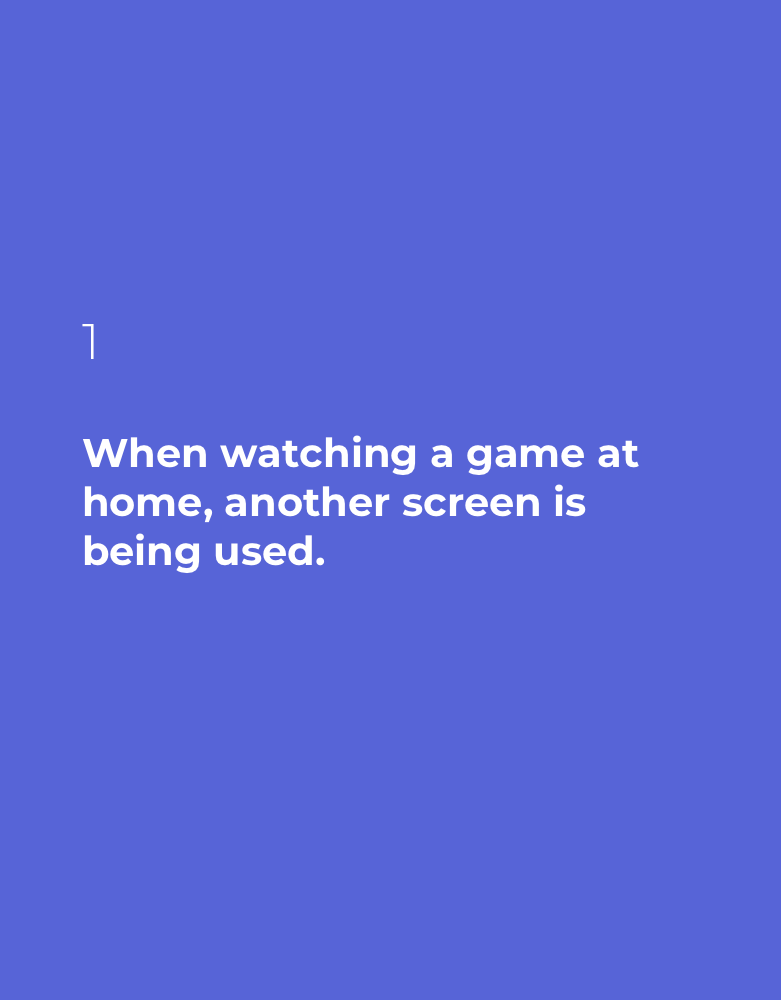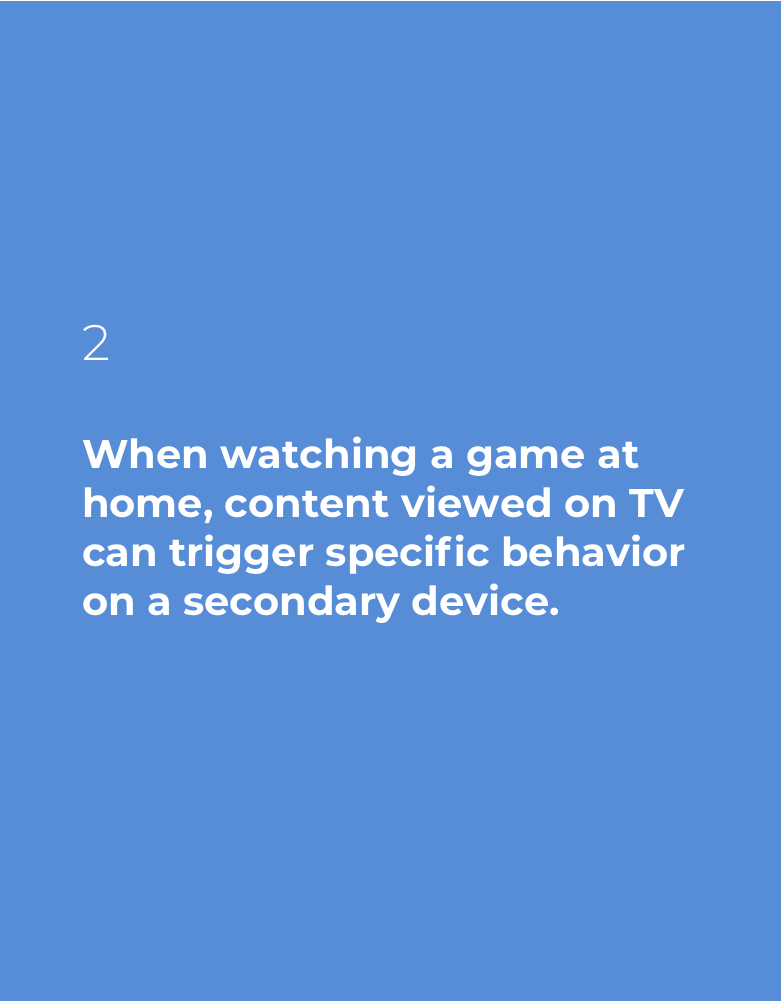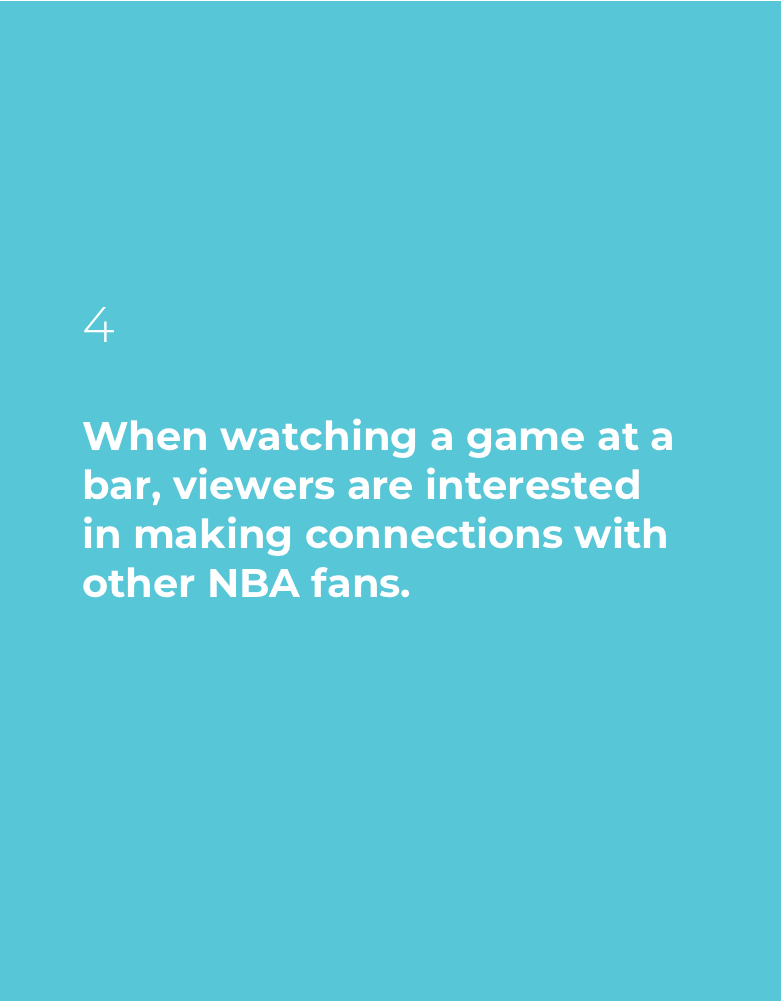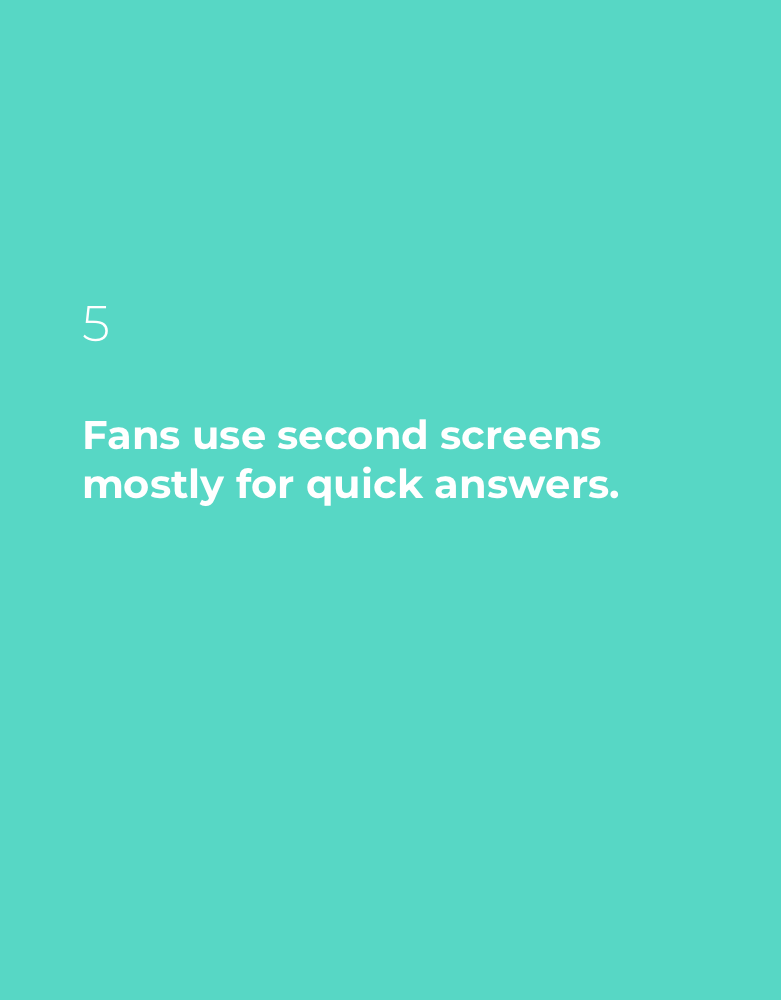SAP | NBA Partnership
Defined key opportunities for new fan experiences, and designed a few second screen concepts that enable fans to consume games in new ways.
ABOUT
SAP partners with some of the world’s leading brands in Sports and Entertainment to showcase their latest technologies through compelling brand-driven stories.
The NBA-SAP Partnership presented an opportunity to lead a small design team to define key opportunities for new fan experiences, and identify those that improve the League’s operations and the nature of the sport.
Grounded in the latest trends in sports and technology, we designed a few second screen concepts that enable fans to consume games in new ways.
CHAPTER ONE
Defining a new tech story.
Through a 3 week research effort that investigated the latest trends in sports and technology, we compiled a trends report that outlined several potential opportunities that drive new fan experiences, impact the nature of the sport, and improve the league’s operations.
1
Engaging fans on the second screen.
_________
The advent of wearables, while benefiting teams and players through comprehensive physiological and performance data are great opportunities for fans to understand more about the game on a deeper level.
2
Overcoming the limitations of Analytics.
_________
Every micro-movement on the court can now be tracked, quantified, and eventually archived. As the technology evolves, the next frontier is in-game decisions being dictated, in part, by real-time data generated by wearable devices during games.
3
Content Distribution, a new business era.
_________
Tools like Facebook Live, Periscope and other on-demand live-stream platforms allow devoted fans to create instant content, providing a brand new “First-Person” angle to tell stories. On the other side, fans want to hear directly from athletes, without a “middleman”.
4
NBA2K, a new frontier.
_________
While traditional sports have physical/spacial limitations, eSports are more fast-paced and scalable because of its reliance on digital platforms. As eSports evolve, casual leagues and pickup competitions will increase, and leagues will have a lot more talent pools to scout and manufacture potential stars.
CHAPTER TWO
Narrowing our focus.
At the time, esports was entirely new territory for the NBA. Information on the premier 2K season was very limited, and the NBA2K league was a relatively new business venture still in the process of establishing key business processes. We worked with our stakeholders to understand that our immediate priorities were to deliver concepts on second screen experiences, and assist in the NBA’s strategy to establish itself as an eSports league. Our guirella-style research helped us understand fans better, and helped establish a clear need for second screens and its potential uses.

The need for second screens.
A quick round of research with NBA fans helped uncover the need for second screens and fan behavior.
CHAPTER THREE
Tying it all together.
Having established user needs and opportunities with second screens, we conducted a design thinking workshop with a number of different groups in the NBA. We developed a unified view around the goals of the partnership, unpacked the NBA’s strategy behind second screens, and identified a number of barriers to the growth of the NBA 2K inaugural season.


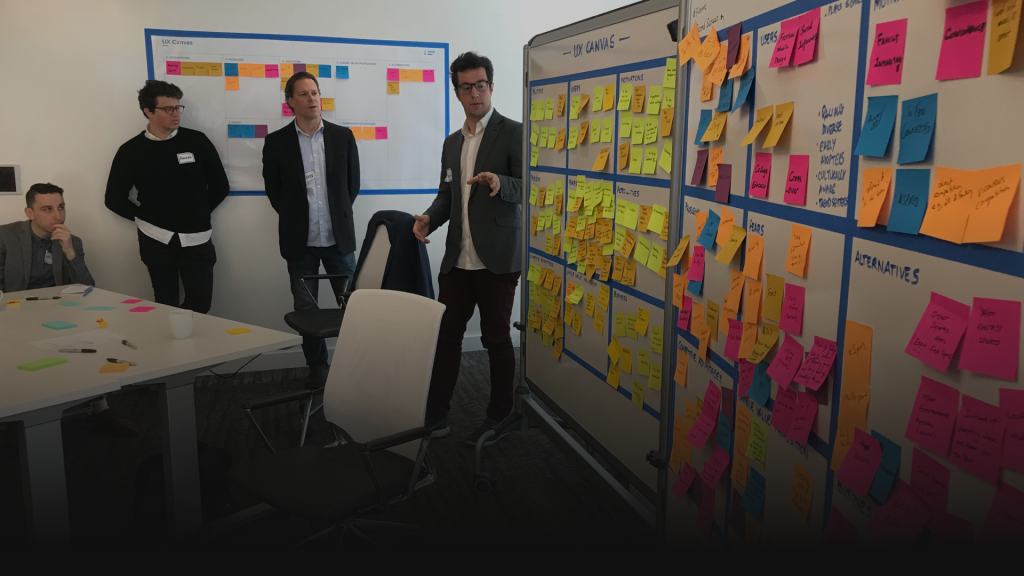
Fans want entertainment, instant analysis, inside access and a shared experience.
Positive Drivers
Education on new players and storytelling around their journeys
Highlights catered to casual fans through more digestible and personalized content.
Negative Drivers
Fans tend to lose incentive to watch games as teams get eliminated from the playoffs.
Lack of context around stats can make the game difficult to consume.

Using Journey Maps to further understand the NBA 2K Inaugural season structure, target users and milestones, we highlighted the NBA’s top problems for the inaugural season.
How can the NBA 2K League tell great statistical stories around elite gamers?
How can the NBA 2K League increase diversity and maintain engagement?
Following this, we used select design thinking methods to produce over 30 ideas on second screen experiences and ways to overcome NBA2K’s barriers to success.

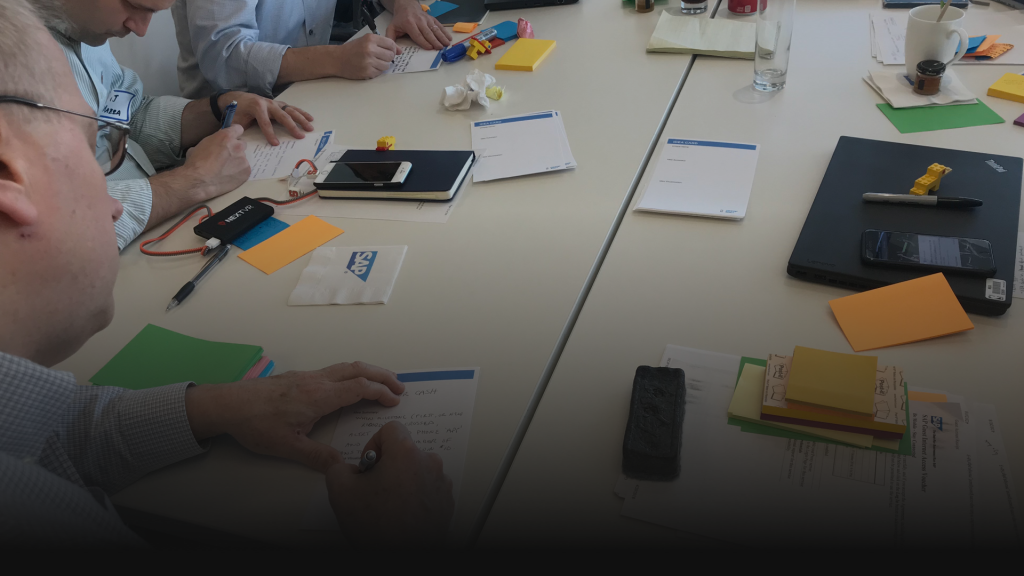
CHAPTER FOUR
Making ideas work.
With a number of ideas around second screens and fan engagement, a few concept validation sessions with fans and key stakeholders helped identify the most desirable ideas, paving the way for lo and hi-fidelity design.
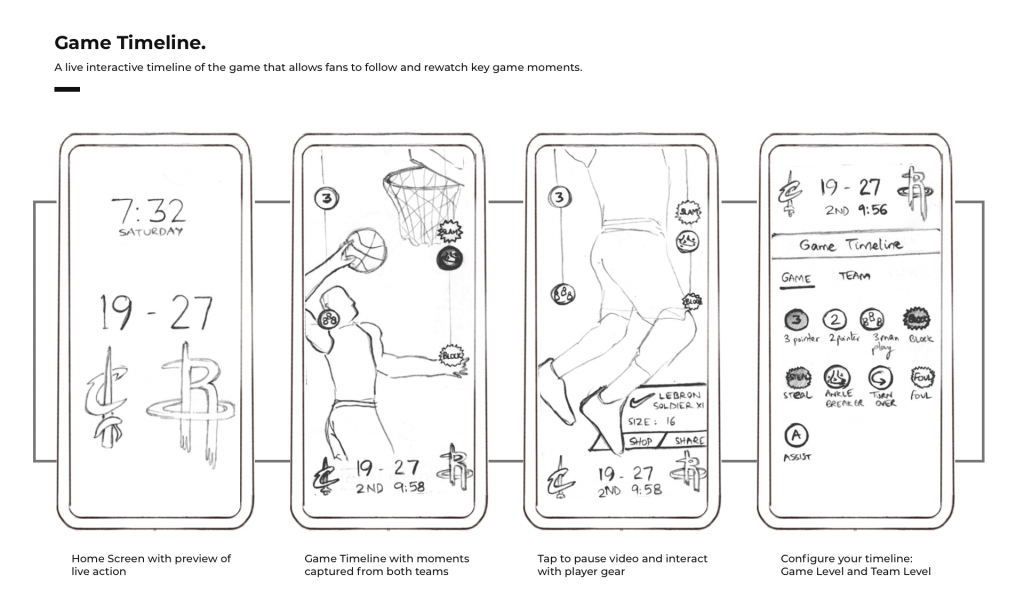
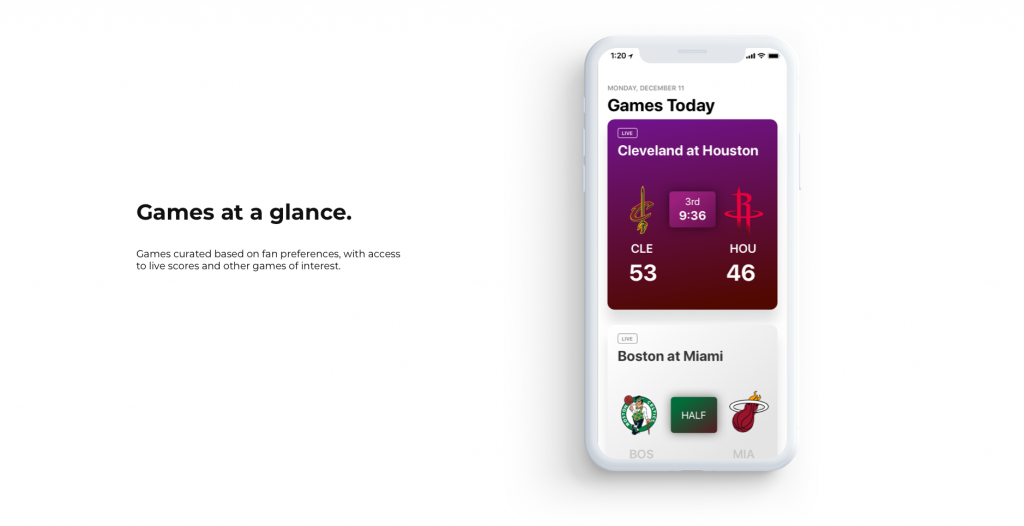

CHAPTER FIVE
Outcome and Takeaways.
The project saw a small team of designers with no familiarity with sports or the sports industry, employ an effective design process to understand and uncover the latest trends in sports and technology. Keeping the design team small allowed us to move fast and experiment with a number of design thinking methods, tailor them to the project’s needs and employ them in a number of situations. Guerrilla-style research proved to a highly effective method to gain access to fans and validate concepts, when slow decision making and limited resources were roadblocks at times.
The design thinking workshop shed new light on a number of barriers to the success of the inaugural NBA2K league, and reintroduced design thinking as a powerful tool to understand and solve problems. The NBA is currently pursuing a number of ideas that emerged from our design thinking workshop to create new fan experiences.


